Lamina1 (L1) Token Explorer
L1 Token
Base utility and governance token
LL1 Token
Launch token with lock-up period
RL1 Token
Reward token for creators and validators
VOTE Token
Governance token for platform decisions
STAKE Token
Staking boost token for rewards
Token Allocation Breakdown
- Community Distribution 50%
- Founding Team 16.1%
- Private Investors 14.7%
- Open Metaverse Foundation 13.2%
- Future Airdrops 6%
Select a token card above to learn about its function and role in the Lamina1 ecosystem.
Ever wondered why a handful of crypto projects focus on art, stories, and games instead of just payments? Lamina1 is the answer. It’s a creator‑owned blockchain that lets writers, filmmakers, game designers and their fans trade ideas and royalties on a native coin called L1. Below you’ll get a plain‑English walk‑through of what the coin does, how it works, and what you need to know before you decide to hold or use it.
What is Lamina1 (L1) Crypto Coin?
Lamina1 is a creator‑focused blockchain platform built on Avalanche’s scalable architecture. Launched in June 2022 by author Neal Stephenson, crypto pioneer Peter Vessenes and entertainment executive Rebecca Barkin, the network’s sole purpose is to give intellectual‑property creators a place to mint, sell and earn royalties without a middleman.
The native crypto unit of this ecosystem is the L1 token. With a total supply of 1.5billion L1, each token works like gasoline for the platform: it pays transaction fees, powers governance, and distributes rewards to creators, validators and stakers.
Technical Architecture
Underlying the user‑friendly front‑end is a multi‑subnet design that lives on the Avalanche P‑chain. In plain terms, Lamina1 runs two active blockchains right now:
- Main Lamina1 chain - handles content publishing, marketplace trades and governance proposals.
- Identity chain - stores usernames, authentication data and the “Laminar Identity Service”.
Both chains are EVM‑compatible, meaning any Ethereum‑based wallet (MetaMask, Trust Wallet, etc.) can interact with them. Smart contracts are written in Solidity and include special “Template” contracts that lock ownership and royalty percentages directly into the code when a creator uploads a piece of media through the Creator Studio.
Because Lamina1 inherits Avalanche’s consensus, transactions settle in under two seconds and cost a fraction of a cent in gas. The network also supports wrapped versions of L1 on other chains, giving developers flexibility to bridge assets into ERC‑20 form when needed.
Tokenomics and the Multi‑Token System
The token model is deliberately layered. Besides the base L1 token, the platform introduces four supporting tokens that each have a unique role:
- LL1 (Launch L1) - distributed at launch, locked until November2024, then released gradually to early supporters.
- RL1 (Reward L1) - automatically minted by the Rewards Contract for validators, stakers and creators who meet activity thresholds.
- VOTE token - a soulbound governance token awarded instantly when a user locks L1. Holding VOTE lets you vote on platform upgrades, fee structures and community grants.
- STAKE token - issued to users who stake L1; it multiplies the amount of RL1 you earn, acting like a “boost” for loyal participants.
The initial allocation of the 1.5billion L1 looks like this:
- 50% - community distribution (airdrops, quest rewards, creator payouts)
- 16.1% - founding team
- 14.7% - private investors
- 13.2% - Open Metaverse Foundation
- 6% - future airdrops and exchange incentives
Monetary policy is overseen by the Open Metaverse Monetary Authority (OMMA), a novel hybrid of decentralized governance and central‑bank‑style oversight. While OMMA’s exact decision‑making body isn’t fully public yet, its charter states that supply changes, inflation targets and reward schedules will be adjusted only after a VOTE‑based referendum.

How L1 Is Used in the Ecosystem
Every action on the Lamina1 Hub costs L1. Here’s a quick rundown of the most common use‑cases:
- Paying gas for uploading a story, a game asset or an NFT through the Creator Studio.
- Buying or tipping content straight from a creator’s Profile or Space.
- Staking L1 to receive STAKE tokens, which then amplify RL1 rewards.
- Locking L1 to earn VOTE tokens and participate in governance polls.
- Purchasing storefront listings once the upcoming Storefront feature goes live.
Because smart contracts enforce royalty splits at the protocol level, creators don’t need to manually track downstream sales. Every resale that passes through the Lamina1 marketplace automatically sends a pre‑defined percentage back to the original L1 holder.
Acquiring and Using L1
You can get L1 in several ways:
- Exchange purchases - L1 is listed on a handful of mid‑size exchanges; simply place a market order using USD, USDT or AVAX.
- Community airdrops - the platform runs periodic airdrop campaigns (e.g., the Hubmania airdrop) that send free L1 to active users.
- Creator rewards - publishing a hit story, running a successful quest, or providing services on the platform can earn RL1 directly.
- Staking programs - after the November2024 unlock, users can lock L1 in the official Lamina1 Wallet to start earning STAKE and RL1.
Transfers are straightforward: the Lamina1 Wallet lets you send L1 to another user’s username (e.g., @creative‑alice) or to a raw blockchain address. The tip button inside Profiles is a favourite shortcut for fans who want to thank a creator instantly.
Comparison Table: Lamina1 vs Ethereum vs Solana
| Feature | Lamina1 (L1) | Ethereum | Solana |
|---|---|---|---|
| Primary purpose | Creator IP incubation & royalty automation | General‑purpose smart contracts | High‑throughput DeFi & NFTs |
| Consensus speed | ~2seconds | ~15seconds (Layer1) | ~400ms |
| Average transaction fee | ≈$0.001 | ≈$2‑$5 (high‑gas periods) | ≈$0.00025 |
| Native token | L1 (utility & governance) | ETH | SOL |
| Creator‑specific tools | Creator Studio, Template contracts, Lamina1 Hub | Standard ERC‑721/1155 contracts (need custom dev) | Metaplex standard (still developer‑heavy) |
The table shows why Lamina1 may feel more “plug‑and‑play” for storytellers: the platform bundles royalty logic and user‑friendly publishing tools that on Ethereum or Solana would require separate contracts or third‑party services.

Risks and Considerations
Before you allocate any capital, keep these points in mind:
- Liquidity - L1 trades on a limited number of exchanges, so moving large amounts could affect price.
- Governance centralization - while VOTE tokens are soulbound, a large share of L1 is still held by the founding team and the Open Metaverse Foundation, potentially influencing decisions.
- Roadmap execution - upcoming features like Storefronts and expanded Subnets are critical to the platform’s utility. Delays could slow adoption.
- Regulatory environment - as a token with utility and governance functions, L1 may attract scrutiny in jurisdictions that treat such tokens as securities.
All crypto investments carry risk; treat L1 as you would any niche token-research, diversify, and never invest more than you can afford to lose.
Key Takeaways
- Lamina1 is a creator‑centric Layer1 blockchain built on Avalanche, aimed at simplifying IP monetization.
- The native L1 token powers gas, governance, and rewards; a multi‑token model (LL1, RL1, VOTE, STAKE) adds layers of functionality.
- Technical performance (2second finality, sub‑cent gas) makes micro‑transactions viable for tipping and content sales.
- Liquidity is modest; watch exchange listings and community airdrop schedules before committing large sums.
- Future roadmap milestones-Storefronts, additional Subnets, and expanded creator tools-will determine long‑term relevance.
Frequently Asked Questions
What can I do with L1 tokens today?
You can pay gas for publishing content, tip creators, transfer tokens to other users, and lock L1 to receive VOTE tokens for governance. If you already have a Lamina1 Wallet, the Send/Receive tab makes these actions a one‑click process.
How does staking work on Lamina1?
After the November2024 token unlock, you can lock L1 in the official Lamina1 Wallet. The platform issues STAKE tokens proportional to the amount you lock. Those STAKE tokens boost the RL1 rewards you earn from validation and creator activity.
Is L1 an investment or just a utility token?
L1 serves both roles. It is required to run transactions on the network (utility) and is tradable on exchanges, meaning its market price can fluctuate (investment). Treat it as a hybrid-evaluate the platform’s growth alongside typical token risk factors.
Where can I buy L1?
L1 is listed on a few mid‑size crypto exchanges; check the latest listings on CoinMarketCap or CoinGecko. You can also receive it through community airdrops, creator rewards, or by buying from another user via the Lamina1 Wallet’s Send/Receive feature.
What is the Open Metaverse Monetary Authority (OMMA)?
OMMA is the governing body that manages Lamina1’s monetary policy. It oversees token issuance, inflation targets and reward schedules, and does so under a VOTE‑based referendum system, blending central‑bank concepts with decentralized decision‑making.
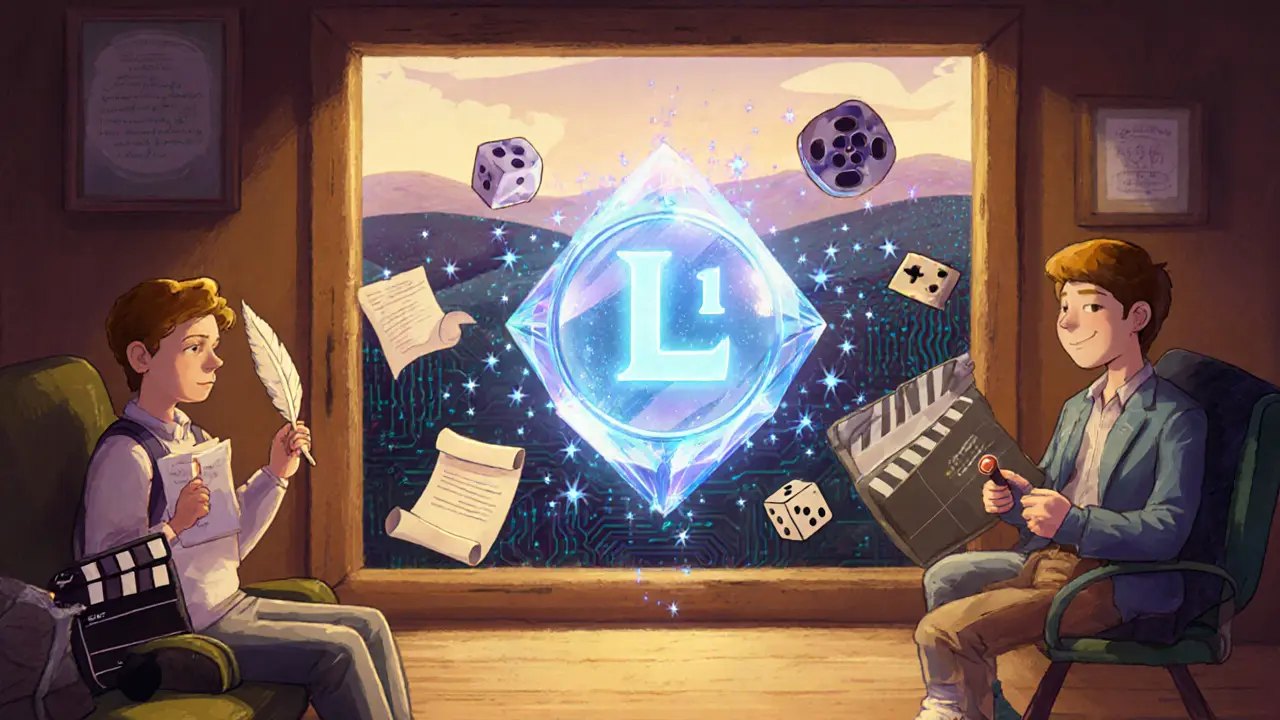
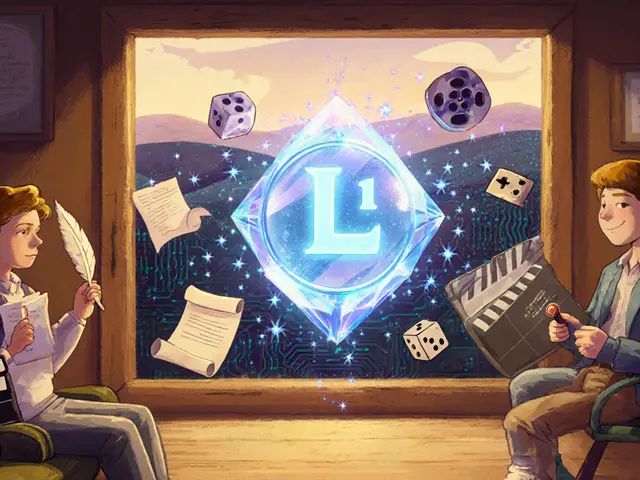
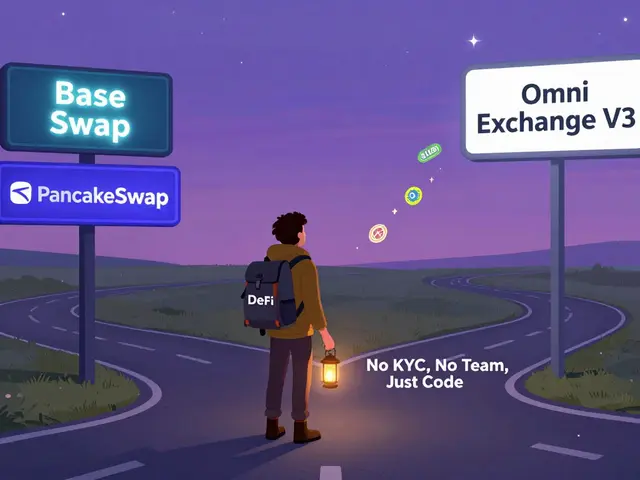
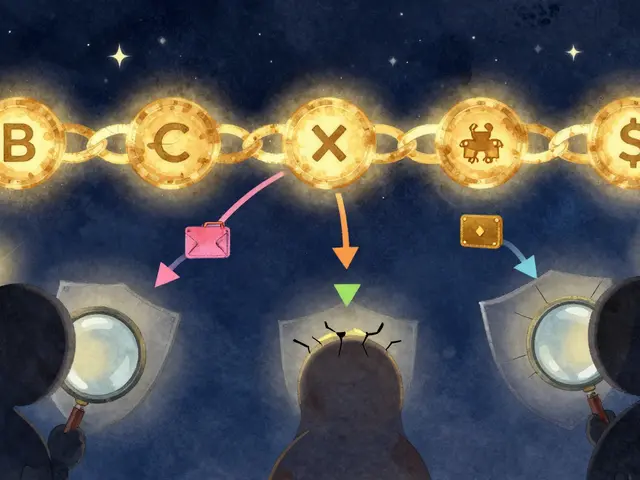

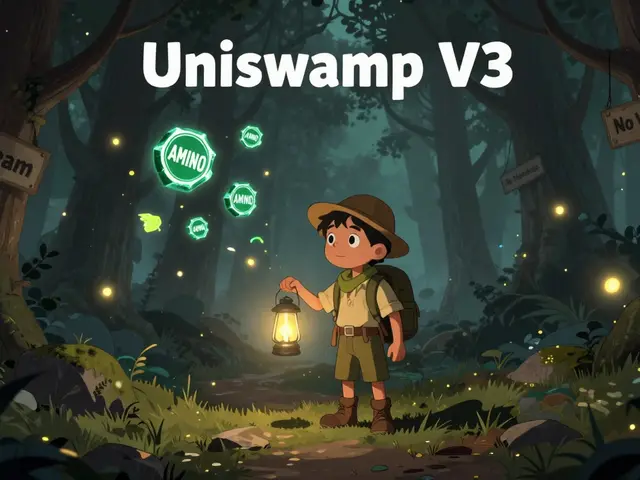
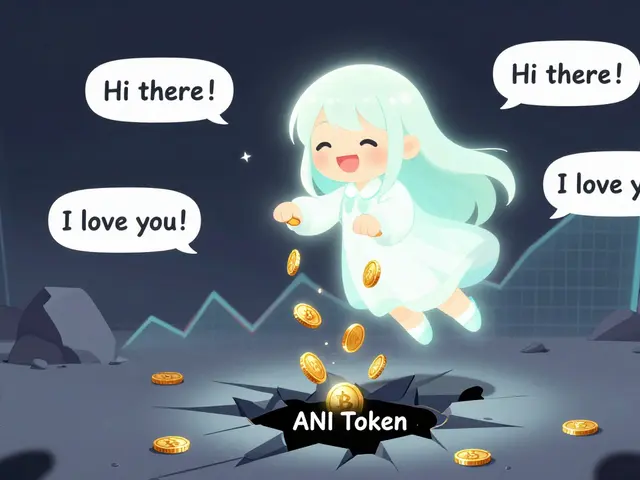
angela sastre
October 10, 2025 AT 19:47L1 is actually kinda genius if you’re a writer or indie dev. No more begging publishers for royalties-your code just pays you every time someone resells your story or art. I’ve seen creators make more off one NFT than their entire book launch. Game changer.
Aniket Sable
October 11, 2025 AT 18:40so l1 is like a blockchain for artists? cool. i like that u can tip creators directly. no middlemen. simple. 😊
Patrick Rocillo
October 12, 2025 AT 00:41OMG this is the crypto project I’ve been waiting for!! 🎮📚🎨 Finally someone gets it-creators shouldn’t have to beg for their cut. I just locked 500 L1 for VOTE tokens and I’m already feeling like part of the movement. The STAKE boost is pure genius. Let’s gooooooo!
Santosh harnaval
October 12, 2025 AT 21:34Simple, fast, creator-focused. That’s all you need.
Will Atkinson
October 13, 2025 AT 07:50I’ve watched this project grow from a Discord thread to a real ecosystem-and honestly? It’s beautiful. The way they’ve layered tokens-VOTE, STAKE, RL1-it’s like they designed a living economy instead of just a coin. And the fact that royalties are baked into the contract? That’s not just innovation, that’s justice for creators. I’ve already shared this with three writer friends. They’re all signing up.
emma bullivant
October 13, 2025 AT 19:43Interesting how they’re blending central-bank governance with decentralized voting. It feels… paradoxical? Like a democracy with a benevolent dictator. I wonder if OMMA’s transparency will hold up-or if it’ll become just another opaque committee. Either way, the tech is solid. I’m just nervous about the 16% team allocation. Hope they don’t dump after unlock.
Claymore girl Claymoreanime
October 14, 2025 AT 07:26Oh great. Another ‘creator-focused’ blockchain that’s just a glorified NFT marketplace with extra steps. You know what? Ethereum’s gas fees are a nightmare-but at least it’s not pretending to be some utopian artist commune. This feels like a VC-funded fantasy where Neal Stephenson thinks he’s the oracle of the new digital Renaissance. Spare me.
Mike Kimberly
October 14, 2025 AT 16:33Let’s not pretend this is the first time someone tried to build a creator economy on-chain. But Lamina1’s execution is leagues ahead. The multi-chain structure-main chain for content, identity chain for usernames-is elegant. And the fact that they’re using Avalanche’s subnets means they can scale without sacrificing decentralization. The tokenomics are complex, yes-but that’s because they’re trying to solve real problems: royalty fragmentation, attribution decay, and platform dependency. Most platforms take 30-50% of creator revenue. Lamina1 takes 5% and gives the rest back to the people who made it. That’s not just fair-it’s revolutionary. And yes, liquidity is thin right now. But that’s because the community is still small. Once the Storefront launches and the November unlock hits, you’ll see institutional wallets start creeping in. This isn’t hype. It’s infrastructure.
monica thomas
October 14, 2025 AT 23:22Could you please clarify the legal classification of the VOTE token? Is it considered a security under U.S. federal guidelines, given its direct correlation to governance rights and its non-transferable nature? Additionally, has any legal opinion been published regarding the compliance of the OMMA’s decision-making structure with the Howey Test?
Michael Hagerman
October 15, 2025 AT 13:30So… L1 is basically the ‘cool kid’ blockchain that only artists and sci-fi nerds care about? I’m just waiting for the first viral tweet where someone says ‘I bought a poem and now I’m rich.’ 😭
Edwin Davis
October 15, 2025 AT 16:26Another crypto project funded by Silicon Valley elites to distract us from real problems. We don’t need another blockchain for writers-we need healthcare, housing, and jobs. This is just digital glitter for the privileged. Stick to Bitcoin if you want real value.